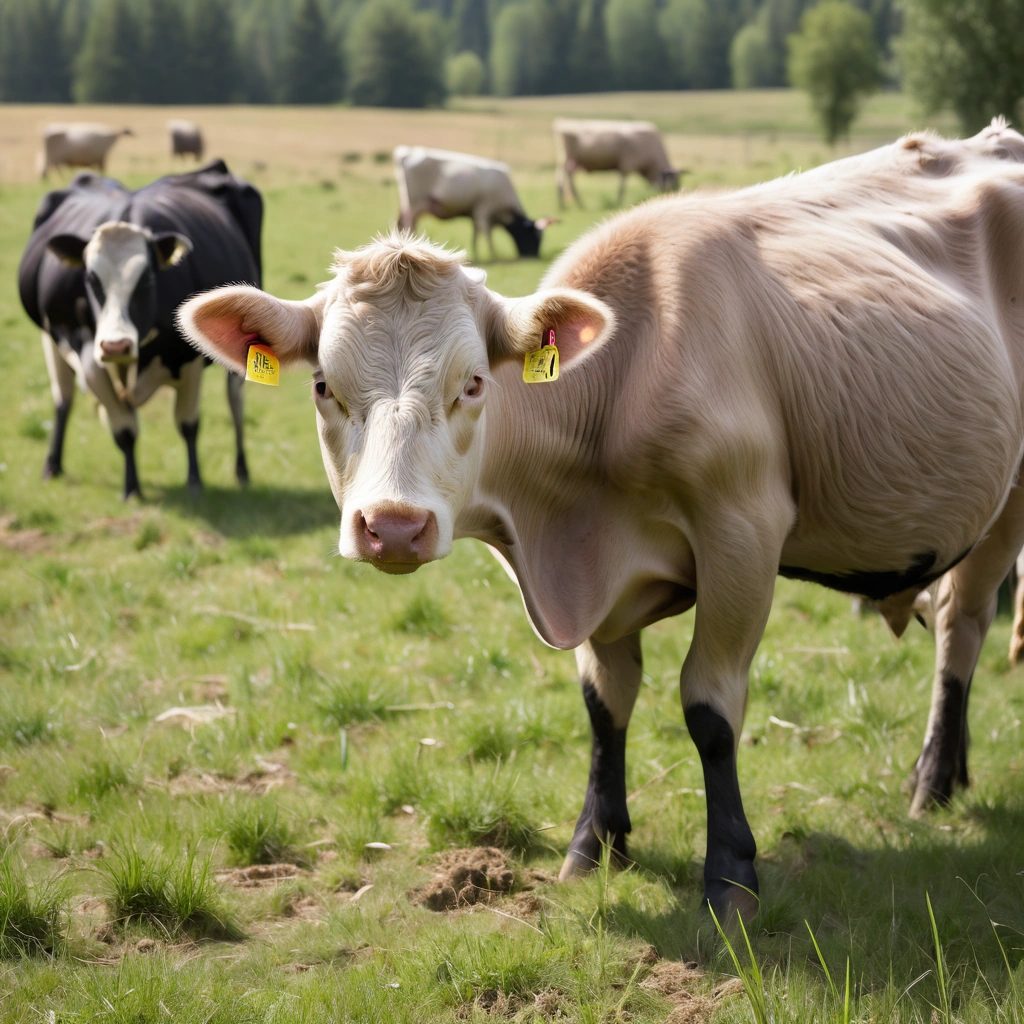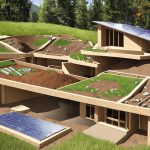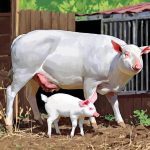Implementing Regenerative Grazing: A Practical Guide for Sustainable Livestock Management
Introduction: The Urgent Need for Regenerative Grazing
The escalating global demand for food necessitates a critical re-evaluation of our agricultural practices. Conventional livestock management, while often prioritizing short-term productivity, frequently contributes to detrimental environmental consequences, including soil degradation, diminished biodiversity, and elevated greenhouse gas emissions. These practices disrupt vital ecosystem services and undermine the long-term viability of agricultural landscapes. Regenerative grazing presents a compelling alternative, shifting the focus towards holistic land management strategies that foster ecological resilience and economic sustainability. By mimicking natural grazing patterns and prioritizing soil health, regenerative grazing offers a pathway to enhance agricultural sustainability while mitigating the adverse impacts of conventional methods.
This approach acknowledges the interconnectedness of soil, plants, and animals, promoting a balanced and thriving ecosystem. Regenerative grazing goes beyond simple rotational grazing; it’s a comprehensive approach to pasture management that actively enhances soil health, promotes carbon sequestration, and increases biodiversity. Implementing regenerative practices involves carefully planned grazing periods followed by adequate recovery times, preventing overgrazing and allowing plants to fully regenerate their root systems. This, in turn, improves soil structure, water infiltration, and nutrient cycling, leading to healthier and more productive pastures.
Furthermore, regenerative grazing can significantly enhance carbon sequestration in soils, mitigating climate change and improving soil fertility. By strategically managing livestock and promoting plant diversity, farmers can create resilient ecosystems that are better equipped to withstand environmental stresses. The principles of sustainable livestock management are thus interwoven with the goals of environmental stewardship. Transitioning to regenerative grazing also necessitates careful livestock selection and water management strategies. Choosing breeds that are well-suited to the local climate and forage conditions can improve efficiency and reduce environmental impact.
Implementing water management practices, such as providing multiple watering points and protecting riparian areas, can prevent overgrazing near water sources and improve water quality. Moreover, optimizing grazing patterns can enhance nutrient distribution across pastures, reducing the need for synthetic fertilizers and minimizing nutrient runoff. By integrating these practices, farmers can create a more sustainable and resilient livestock operation that benefits both the environment and their bottom line. This guide provides a practical roadmap for transitioning to regenerative grazing, empowering farmers, ranchers, and agricultural professionals to adopt sustainable livestock practices and contribute to a healthier planet.
Understanding the Principles of Regenerative Grazing
Regenerative grazing is more than just rotational grazing; it’s a holistic approach that mimics natural grazing patterns to improve soil health, sequester carbon, and enhance biodiversity. It represents a paradigm shift in sustainable livestock management, moving away from extractive practices towards a system that actively restores and enhances the natural resources it relies upon. Key principles include: Planned Grazing: Carefully planning grazing periods and recovery times to prevent overgrazing and allow plants to fully recover.
High Stock Density, Short Duration: Grazing a high number of animals for a short period in a specific area, followed by a long rest period. Diverse Pasture Mixes: Planting a variety of grasses, legumes, and forbs to improve soil health and provide a balanced diet for livestock. Minimal Soil Disturbance: Reducing tillage and other practices that disrupt the soil ecosystem. Adaptive Management: Continuously monitoring and adjusting grazing practices based on environmental conditions and livestock needs.
These principles work together to stimulate plant growth, increase soil organic matter, improve water infiltration, and create a more resilient ecosystem. As Dr. Elaine Ingham, a renowned soil microbiologist, often states, “Healthy soil is the foundation of a healthy planet.” Regenerative grazing practices directly contribute to carbon sequestration, pulling atmospheric carbon into the soil where it can improve fertility and water retention. Studies have shown that well-managed grazing lands can sequester significant amounts of carbon, potentially offsetting a portion of the greenhouse gas emissions associated with livestock production.
The Rodale Institute, for example, has conducted extensive research demonstrating the carbon sequestration potential of regenerative agricultural practices, including managed grazing. Beyond carbon sequestration, regenerative grazing profoundly impacts biodiversity. Diverse pasture mixes create habitats for a wider range of insects, birds, and other wildlife. The increased plant diversity also supports a more diverse soil microbiome, which is essential for nutrient cycling and soil health livestock. Furthermore, the careful planning of grazing periods allows native plants to thrive, creating a more resilient and balanced ecosystem.
Implementing effective water management strategies is also crucial. This includes providing access to clean water sources for livestock while minimizing water runoff and erosion. Strategies like rotational watering points and riparian buffer zones can further enhance agricultural sustainability. Livestock selection also plays a role in the success of regenerative grazing. Choosing breeds that are well-suited to the local climate and forage conditions can improve overall efficiency and reduce the need for supplemental feed. Adaptive grazing requires continuous monitoring of both the livestock and the land. Farmers need to observe animal behavior, plant growth, and soil conditions to make informed decisions about grazing periods and stocking rates. This adaptive approach ensures that the grazing system remains healthy and productive over the long term, contributing to both environmental and economic sustainability.
Practical Steps for Transitioning to Regenerative Grazing
Transitioning to regenerative grazing requires careful planning and execution, representing a paradigm shift in sustainable livestock management. It’s not merely about changing grazing patterns; it’s about fostering a symbiotic relationship between livestock, land, and the broader ecosystem. Here’s a step-by-step guide to help you navigate this transition effectively. 1. **Assess Your Current Pastures:** Begin with a comprehensive assessment. Conduct a soil test to determine nutrient levels, organic matter content, and microbial activity – key indicators of soil health livestock.
Evaluate the existing plant species, identifying desirable forage and problem weeds. Note areas of erosion, compaction, or degradation. This baseline data will inform your grazing plan and allow you to track progress over time. For example, a severely degraded pasture might require initial remediation efforts, such as seeding with cover crops, before implementing intensive rotational grazing. 2. **Develop a Grazing Plan:** Divide your pastures into smaller paddocks using temporary or permanent fencing. The size and number of paddocks will depend on your livestock type and numbers, pasture size, and desired rest periods.
Determine the appropriate stocking rate and grazing periods for each paddock, considering factors like plant growth rates and seasonal variations. A well-designed grazing plan is the cornerstone of regenerative grazing, enabling optimal pasture management and preventing overgrazing. Consider using tools like grazing charts or software to aid in planning and tracking. 3. **Implement Rotational Grazing:** Move livestock regularly between paddocks, allowing each paddock to fully recover before being grazed again. The rest period is critical for plant regrowth, root development, and soil health.
Rotational grazing promotes biodiversity by preventing selective grazing and encouraging a wider range of plant species to thrive. This, in turn, enhances carbon sequestration in the soil, contributing to agricultural sustainability. The duration of grazing and rest periods should be adjusted based on plant growth, weather conditions, and livestock needs. 4. **Monitor Pasture Health:** Regularly monitor plant growth, soil moisture, and livestock performance. Observe plant species composition, ground cover, and signs of erosion. Track livestock weight gain, body condition, and reproductive rates.
Adjust your grazing plan as needed based on your observations. Adaptive management is key to successful regenerative grazing. Consider using photo monitoring points to visually track changes in pasture health over time. 5. **Improve Water Management:** Ensure livestock have access to clean water in each paddock. Consider installing water pipelines or portable water troughs to minimize soil disturbance and prevent overgrazing around water sources. Strategic water placement can also encourage more even grazing distribution across the paddock.
Water management is crucial for both livestock health and pasture health. 6. **Select Appropriate Livestock:** Choose livestock breeds that are well-suited to your climate and grazing conditions. Consider factors such as grazing efficiency, disease resistance, and reproductive performance. Some breeds are more adept at utilizing specific forage types or tolerating harsh conditions. Livestock selection plays a significant role in the overall success of your regenerative grazing system. For instance, heritage breeds are often well-adapted to local environments and may require less intensive management. Implementing regenerative grazing is an investment in the long-term health of your land and the sustainability of your livestock operation. It requires a shift in mindset, embracing a holistic approach to land management. The benefits, including improved soil health, increased carbon sequestration, enhanced biodiversity, and improved livestock performance, make it a worthwhile endeavor. Remember to document your progress and share your experiences with other farmers and ranchers.
Addressing Common Challenges and Showcasing Success Stories
Implementing regenerative grazing can present several challenges. Here are some common issues and potential solutions: **Challenge:** Initial investment in fencing and water infrastructure.
**Solution:** Explore cost-sharing programs offered by government agencies and non-profit organizations. Consider using temporary fencing to reduce upfront costs.
**Challenge:** Difficulty managing grazing periods and recovery times.
**Solution:** Use grazing charts or mobile apps to track grazing rotations. Consult with a grazing expert for guidance.
**Challenge:** Weed infestations.
**Solution:** Implement targeted grazing strategies to control weeds.
Use cover crops to suppress weed growth.
**Challenge:** Drought conditions.
**Solution:** Reduce stocking rates during drought periods. Implement water conservation practices, such as rainwater harvesting. Beyond these initial hurdles, successful implementation of regenerative grazing hinges on a deeper understanding of the interplay between livestock, soil, and plant life. Fine-tuning pasture management involves observing plant response to grazing, adjusting stocking densities to prevent overgrazing, and strategically using livestock to stimulate plant growth and nutrient cycling. Moreover, careful livestock selection plays a role; choosing breeds adapted to the local climate and forage can enhance efficiency and reduce environmental impact.
Sustainable livestock management requires a shift in mindset from maximizing short-term production to fostering long-term ecosystem health, recognizing that healthy soil is the foundation for resilient and productive pastures. Effective water management is also crucial for both livestock well-being and pasture health. Implementing water conservation practices, such as rotational watering points and rainwater harvesting, can minimize water waste and promote even grazing distribution. Thoughtful placement of water sources can also encourage livestock to graze underutilized areas, reducing grazing pressure on more sensitive zones and promoting biodiversity.
Furthermore, improving soil health through regenerative grazing enhances water infiltration and retention, making pastures more resilient to drought conditions. This integrated approach to water management is essential for achieving agricultural sustainability in the face of increasing climate variability. Regenerative grazing’s role in carbon sequestration and biodiversity enhancement is increasingly recognized as vital for mitigating climate change and preserving ecosystem services. Healthy, well-managed pastures can act as significant carbon sinks, drawing carbon dioxide from the atmosphere and storing it in the soil.
This process not only reduces greenhouse gas emissions but also improves soil fertility and water-holding capacity. Furthermore, diverse plant communities in regenerative grazing systems support a wider range of insects, birds, and other wildlife, contributing to overall biodiversity. The principles of regenerative agriculture, when applied to livestock management, offer a powerful pathway towards creating more sustainable and resilient agricultural systems that benefit both the environment and the economy. **Case Study: Brown’s Ranch, North Dakota:** Gabe Brown of Brown’s Ranch transformed his degraded farmland into a thriving ecosystem through regenerative grazing practices.
By implementing no-till farming, cover cropping, and rotational grazing, he significantly improved soil health, increased water infiltration, and reduced his reliance on synthetic fertilizers and pesticides. His ranch now serves as a model for regenerative agriculture. **Case Study: Singing Hills Dairy, California:** Singing Hills Dairy implemented intensive rotational grazing on their dairy farm, resulting in improved pasture productivity, reduced feed costs, and healthier cows. They also saw a significant increase in soil organic matter and carbon sequestration.
Conclusion: Embracing a Regenerative Future
Regenerative grazing is not just a farming practice; it’s a philosophy that emphasizes the interconnectedness of soil, plants, animals, and people. By adopting regenerative grazing practices, farmers and ranchers can create more resilient and sustainable agricultural systems that benefit the environment, their communities, and their bottom lines. As government policies increasingly focus on carbon sequestration and sustainable agriculture, regenerative grazing is poised to become a mainstream practice, contributing to a healthier planet and a more secure food supply.
The transition may require adjustments and learning, but the long-term rewards are undeniable. At its core, regenerative grazing represents a paradigm shift in sustainable livestock management, moving beyond simply minimizing harm to actively restoring ecosystem function. Rotational grazing, a key component, strategically manages livestock movement to optimize pasture management and prevent overgrazing. This, in turn, fosters improved soil health livestock by increasing organic matter, enhancing water infiltration, and promoting a diverse array of soil microorganisms.
Studies have shown that well-managed regenerative systems can significantly increase carbon sequestration in soils, effectively turning pastures into carbon sinks. This approach directly addresses climate change mitigation while simultaneously improving the land’s productivity and resilience. Beyond carbon sequestration, regenerative grazing plays a crucial role in enhancing biodiversity. Diverse plant communities thrive under managed grazing pressure, creating habitat for a wider range of insects, birds, and other wildlife. This increased biodiversity contributes to a more resilient ecosystem, less susceptible to disease and pest outbreaks.
Furthermore, careful livestock selection and water management are integral parts of a regenerative system. Choosing breeds adapted to the local climate and forage conditions, and implementing water-efficient irrigation practices, can further minimize environmental impact and maximize resource utilization. The integration of these practices demonstrates a holistic commitment to agricultural sustainability. Ultimately, the widespread adoption of regenerative grazing hinges on demonstrating its economic viability and providing farmers with the necessary tools and knowledge. Case studies from around the world showcase the potential for increased profitability through reduced input costs, improved livestock health, and enhanced land value. As awareness grows and supportive policies are implemented, regenerative grazing is set to transform the landscape of sustainable agriculture, paving the way for a more resilient and environmentally responsible food system. Continued research and knowledge sharing will be crucial in refining these practices and adapting them to diverse regional contexts, ensuring its long-term success.


